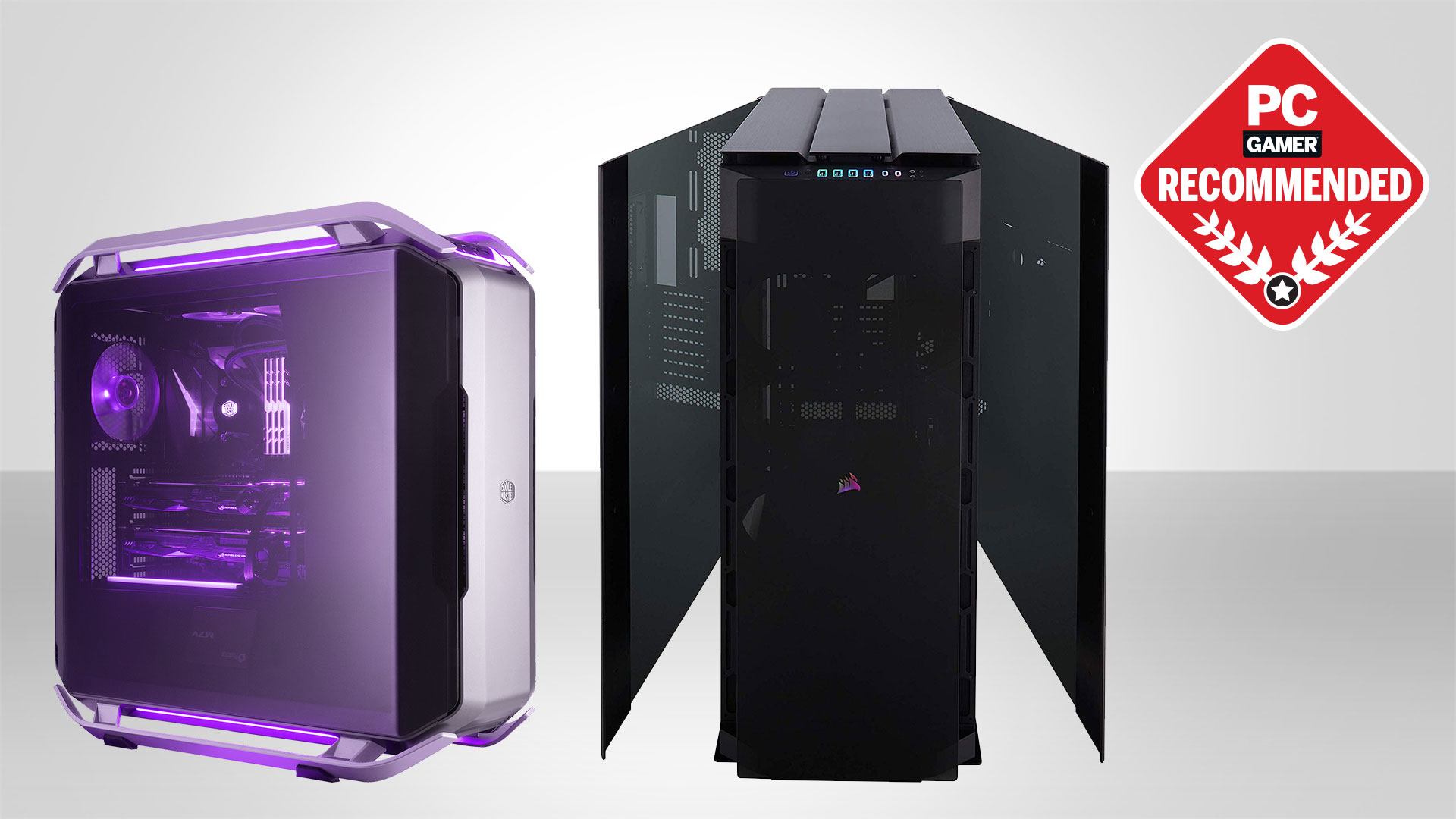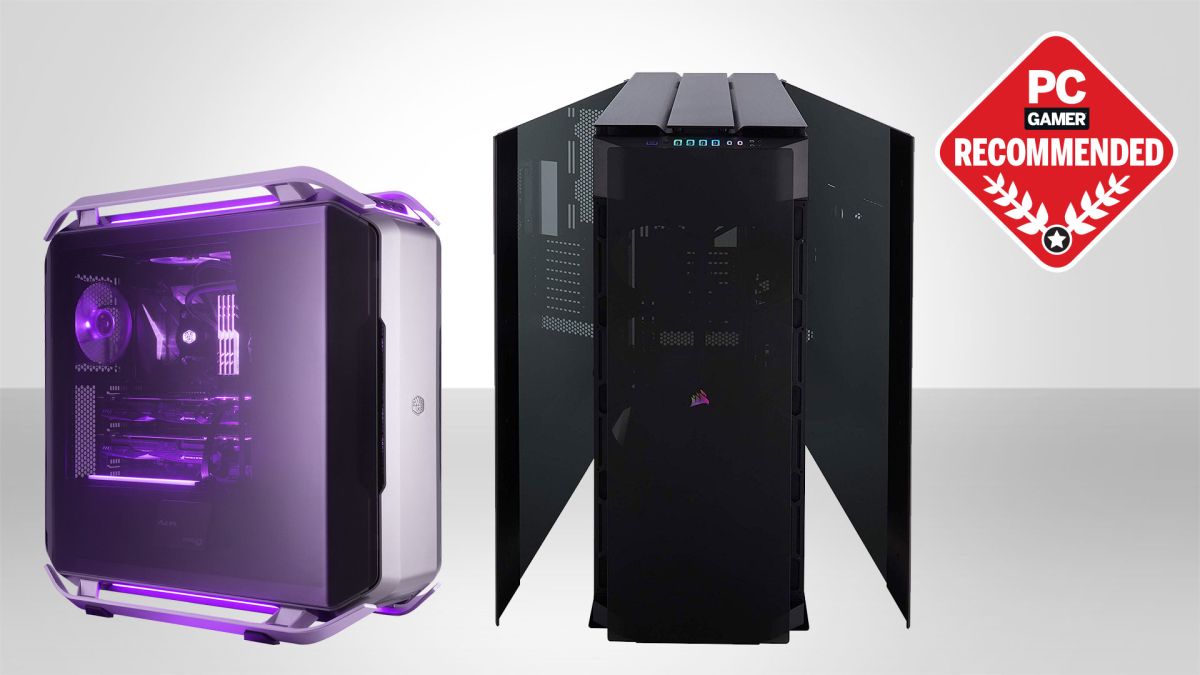[ad_1]

The best full-tower PC case makes a statement. If you want subtle, then a full tower chassis is probably not what you’re after. If you’re going the full-tower route, then it’s because you want room for everything—from the largest possible GPUs to a full array of SSDs and hard drives that would put most NAS boxes to shame. You’ll want plenty of space for the most elaborate of cooling too.
I’m talking about the kind of cooling configurations that just wouldn’t be feasible in smaller systems. This is custom water cooling loop (opens in new tab) territory, with multiple radiators and a frankly ludicrous number of fans.
When choosing a suitable full-tower case, a lot of it will come down to personal taste. Just consider everything you need in a good PC case, like ensuring you’ve got enough clearance for the best graphics card (opens in new tab) and decent airflow. However, you should note that these large cases also come with hefty price tags. So, if cost is a concern or you’re trying to make the best budget PC, consider one of the best mid-tower cases to make your wallet happy.
We’ve listed here our favorite full-towers we’ve tested and wholeheartedly recommend for your future PC build. Alternatively, if you want to look at the other end of the scale, we also have a guide to the best mini-ITX cases (opens in new tab) for those small form-factor builds. And, if all this custom build stuff scares the living hell out of you, check out our guide to the best gaming PCs (opens in new tab) and score yourself a nice prebuilt PC.
The best full-tower case
There are big cases; then, there are big cases. Actually, to describe this case simply as ‘big’ would still be an understatement. The Corsair 1000D is larger than what many would define as a full-tower. It’s so enormous that Corsair calls it a super tower. It’s truly a behemoth of a PC case, ready to house the biggest and baddest systems. Standing tall at a staggering 27.3-inches, this super tower features enough space to house 18 fans and up to four massive radiators simultaneously.
In addition to the insane cooling support, the 1000D features a unique triple-chamber design with convenient French-door-styled storage compartments and telescoping radiator trays for easy installation. It’s a case that is so massive; it can house both an entire E-ATX build and a mini-ITX build at the same time.
Because it is 2022, of course, there is also an RGB-lit front panel I/O with built-in smart lighting and fan control courtesy of Corsair’s Commander Pro controller. The Obsidian 900D has long been a top choice for massive, over-the-top builds, and it only fits that the 1000D would come along to knock it off its throne.
The original Cooler Master Cosmos chassis is a classic of PC case design, and has seen many revisions over the years. The latest, the Cosmos C700M is the pinnacle of that design, taking over from the C700P, a chassis which held firm as one of our favorite full-tower cases for years.
Bigger even than the C700P, the C700M is one of Cooler Master’s largest enclosures and comes with an equally hefty price tag. The premium case maintains the same handlebar design as the calssic Cosmos design, but adds a few modern touches that make it one of the most beautiful cases we’ve seen.
It’s also dialled back the heavy tint on the side panel to more readily reveal the shiny components you’ve paid good money to house inside it.
We were already impressed with the tasteful RGB lighting from its predecessor but the C700M really kicks it up a notch. The lightning now features individually addressable RGB strips that form a continuous line from the back of the top panel all the way through the bottom of the case. Metallic contacts allow you to easily remove the front panel without having to worry about wires. A fresh matte design on the case’s signature handlebars allow the understated lighting to really accent its curves.
The exceptional build quality and premium materials definitely go a long way towards justifying the price.
The company’s signature logo is noticeably absent from the case. Instead, all that remains is a familiar hexagonal shape used as a power button. We’ve already seen this shift with some of Cooler Master’s other cases and liquid coolers, but the C700M really seals the deal with its sleek lines and artfully crafted top ventilation.
One of the favorite things we experienced while building in the case is the fact that we were able to remove the motherboard tray and assemble a majority of our system outside of the case. Built in cable routing, cable management clips and a modular cable cover system also makes it easy to create a very clean system.
The ability to switch between a conventional layout and an inverted one is not uncommon for a high end full tower. What really sets the C700P and C700M apart from the competition is the ability to rotate the motherboard 90 degrees into what Cooler Master calls its chimney layout. This type of layout allows hot air to follow its natural trajectory and efficiently exhaust from the top of the case.
Our only complaint about these alternative motherboard configurations is the fact that it becomes quite a hassle to access the rear I/O. Depending on your desk size, you might even need extension cables for your peripherals. Regardless, the modularity and freedom to customize the C700M is totally in line with Cooler Master’s “Make It Yours” philosophy that enthusiasts have come to love.
That and you’ll have to buy one of Cooler Master’s PCIe 4.0 riser cables as the bundled one is last-gen.
Despite the price, the exceptional build quality and premium materials definitely go a long way towards justifying the price. If money isn’t an issue and you aren’t interested in the behemoth that is Corsair’s 1000D, Cooler Master’s C700M is the ultimate high-end full tower.
Read our full Cooler Master Cosmos C700M review (opens in new tab).
Initially known for its silent power supplies and fans, be quiet! entered the case market with a big splash and has done well in a short period since its first case launch in 2014. One of the company’s later cases, the Dark Base Pro 900, remains one of our highly recommended full-towers thanks to its sleek design and enthusiast-friendly interior.
The case is one of the most modular cases we’ve ever seen. You won’t find too many rivets in this one. Instead, just about every single panel can be removed, making this case a modder’s dream. There’s also a lot of customization available with options for an inverted motherboard layout and even some nifty features like wireless Qi charging and preinstalled LED lighting.
Though for some that might also be its biggest drawback, because that modularity can become rather fiddly if you really start pulling it apart.
The Dark Base Pro 900 is large enough to support the biggest motherboards and radiators up to 420mm in size. It’s a huge full-tower that can support just about any custom cooling you can dream up. It also looks very sleek with a few color options to spice things up. Priced around $200, the Dark Base Pro is a relatively affordable case in this category but comes with all the bells and whistles to make it worth it.
Best mid-tower case (opens in new tab) | Best mini-ITX case (opens in new tab) | Best CPU cooler (opens in new tab) | Best DDR4 RAM (opens in new tab) | Best gaming monitor (opens in new tab)| Best gaming headset (opens in new tab)
With RGB now firmly entrenched in the PC building psyche, tempered glass cases are clearly more than a passing fad. Thermaltake’s View 71 boasts four tempered glass panels to show off your LED-soaked skills, and it comes with three RGB LED fans pre-installed as well.
The View 71 RGB, then, is the perfect full-tower for case lighting enthusiasts. The tempered tinted glass does a great job making internal lighting stand out. And unlike some of the other tempered glass cases we’ve used, the View 71 comes with swinging doors, so you don’t have to remove the entire glass panel every time you want to make a change.
The case also includes a vertical GPU mount and extensive liquid cooling support for all-in-one and custom loops, although you’ll have to buy the riser cable separately if you want to take advantage of that vertical mounting.
If you want a big case with E-ATX support, and the RGB lighting game to showcase your components inside, Thermaltake’s View 71 is a great option.
When it comes to PC cases, Phanteks is one of the most underrated brands around. The company is slightly newer to the scene, but has done a fantastic job making things easier for first-time builders and enthusiasts alike. The Enthoo Pro is one of our favorite full-sized towers.
Phanteks was one of the first manufacturers to include pre-installed cable management ties. This little feature makes a world of difference when it comes to the tedious task of keeping your cables in check. The case also offers a ton of flexibility, which makes it great for all sorts of large builds.
Out of the box, the case comes with a 200mm fan in the front panel and a 140mm fan in the rear. This is enough to provide quite a bit of airflow in the case, but the top panel lets you take things even further with support for a radiator up to 420mm in size. Priced at just under $90, the Phanteks Enthoo Pro is a fantastic value and beefy enough to support a wide variety of full-sized builds.
Best full-tower case FAQ
What should I look for in a full-tower case?
Aside from looking good on your desk, there are a number of key features you should consider before picking up a full-tower case. First off and most important is airflow and cooling. You need to make sure there’s enough space to install fans or liquid cooling radiators. An overheating PC could have devastating effects on performance.
You need to see if your future full-tower case has room for your video card. Not all GPUs are created in the same size so knowing the length of your GPU ahead of time can save you a headache.
Some full-tower cases have special sections to routing and hiding cables which is a big help if your cable management skills aren’t the best.
Are full-tower cases worth it?
The average full-tower PC case will generally be more expensive than their mid-sized, or mini-ITX brethren, so you have to consider whether you really want that scale before you make that purchase. They’re big chassis designed for extreme cooling and extreme components, but they have a footprint and price tag to match.
[ad_2]
www.pcgamer.com
